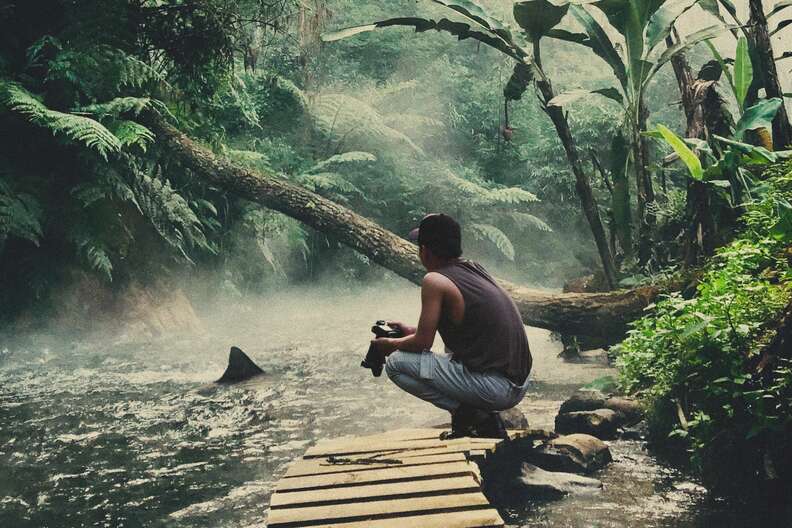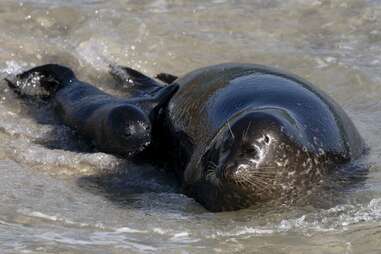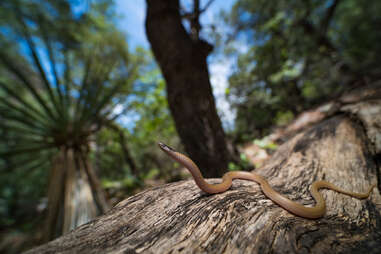
Preserve a Piece of the Wild, One Photo at a Time
A small, but growing group of conservation photography tours aims to connect travelers and animal habitats with the purpose of protecting them.
Ask Scott Trageser to pick a favorite insect, and he’ll need a second. “It changes every week,” says the conservation biologist and president of the Tucson, Arizona–based Biodiversity Group. For him, it’s usually the one on an expedition that makes him stop and say, “Why does this exist?”
He’s attracted to the “weird, usually unloved, and unrecognized,” a predilection that, not coincidentally, the Biodiversity Group also shares. Founded more than two decades ago, the nonprofit’s mission is to foster a thriving conservation sector—from connecting far-flung nonprofits with funding and supporting research to documenting lost or undiscovered species through photography. It’s less about the fuzzy and universally adored creatures of the world and more about the prickly or slithery guys hiding in its cracks. (Tagline: “We Protect Life Overlooked.”) To date, it has documented 100,000 species for conservation and research purposes and discovered more than 40 never seen before.
One of the various ways the group sources funding is by imparting wisdom to amateur photographers and budding conservationists. Trageser and the Biodiversity Group also lead conservation photography workshops, taking participants to global locales in need of attention and showing them the best way to shine a spotlight. “I like to say that photography can open a heart, even if it’s connected to a closed-off mind,” he explains.
“I like to say that photography can open a heart, even if it’s connected to a closed-off mind”
Wildlife photography tours, in which amateur shutterbugs travel the planet in the hope of bringing back photographic souvenirs of lonesome orangutans and slick leopards, are abundant. Google “conservation photography tours,” and it’s a short journey. But in an era where climate change is causing the extinction of species faster than we can even record them, participating in conservation photography can have direct, outsize impact. Photographs taken in the field can help secure funding for research and create positive change in the way of habitat protections.
Trageser, a member of the International League of Conservation Photographers and The Explorers Club, has a storied history of photographing rediscovered species in the wild. In 2014, it was an accidental picture of a thought-to-be-vanished snail on the Vietnamese island of Hon Cau, taken while he was in the region teaching citizen science on behalf of the Biodiversity Group. In 2018, it was the long-lost semitranslucent Mindo glass frog in Ecuador, a finding aided by his trained ears and eyes. “I knew all the frog calls, at least most of them,” says Trageser. “And this one was different. And [the frog itself] was physically very different.”
While many of the photo conservation tours that Trageser leads are in more remote locales like Vietnam and Ecuador, there are tours closer to home, including several workshops in Tucson’s Picture Rocks this coming July and August. Guides will focus on macro, telephoto, and landscape photography. They’ll also pull out something few amateur photographers have been privy to as of yet. The latest tool in the organization’s arsenal is the world’s only 3D scanner for live animals, a major game changer on rediscovery expeditions. “For the first time ever, we can collect digital specimens and not have to euthanize an animal to collect physical specimens,” says Trageser.

While the Biodiversity Group’s tours benefit their own research and conservation endeavors, other photography tours work by partnering with or donating proceeds to the nonprofit conservation groups of their choice. Education out in the field goes beyond the typical “how to get the best shot”—to discussions about sustainability, how to raise awareness, and advocating for protective measures.
When Jennifer Leigh Warner leads groups, she explains that it doesn’t take much to put your photos to work. “You don’t have to be a professional or have a really big following,” she says. “It’s as simple as donating images to a nonprofit or even just posting images online.” Warner, who sits on the board of directors of the North America Nature Photography Association and works with Wildlife Nature Tours, has had her images used in promotional materials for the Cheetah Conservation Fund; closer to home, her photographs of cell phone–wielding tourists approaching sea lions and harbor seals in La Jolla Cove, San Diego, during pupping season has had a direct impact on protections for their habitat.
As chair of the Ethics Committee of NANPA, she also has some insight on how to go about getting the best shot in the wild without interrupting the flow of nature: “It’s making sure that we’re not disturbing nests during nesting season, using calls or bait, or feeding foxes from roadsides, just things like that.” (You can learn more on NANPA’s website.)
As for getting that actual money shot: Grabbing a nice image of a photogenic polar bear is easy. But what about the creatures least likely to be made into stuffed animals? When Trageser is photographing wildlife, he thinks about the prejudices of the audience. Most people are afraid of snakes, he says, so your job is to overcome their fear and get them excited. A good picture highlights the snake’s beauty, or an interesting aspect, without being intimidating. A lil’ snake smile? How could you not want to give it money? Says Trageser, “If you take a photo of a snake and show it to somebody who doesn’t really like snakes, and they’re like, ‘Wow, that’s really cool,’ then you did a job well done.”

Conservation photography tours may not yet be the norm, but that doesn’t mean there aren’t options. This September, award-winning National Geographic photographer extraordinaire Ami Vitale will be teaching conservation storytelling photography in the Pantanal with Terra Incognita Ecotours, founded by Gerard “Ged” Caddick. “One thing that really sets his trips apart is the strong focus on conservation, and he always donates to local grassroots conservation organizations that are conserving the Pantanal ecosystem,” she says.
Beginning in February, Zac Mills, a former economist and governance expert at the World Bank and now founder and guide for The Wildlife Collective, will lead 10 types of tours, photographing gorillas, big cats, orangutans, and more in Rwanda, Indonesia, India, and Alaska. Proceeds from the tours will be donated to places like the Katmai Conservancy in Alaska, which works to protect Katmai National Park and Preserve. On his tours, you’ll not only be coached on photography skills, but you’ll learn about the conservation efforts behind each of the animal habitats.
“Many people never see a polar bear with their own eyes. They may never see an elephant with their own eyes,” says Mills. “But if I take a photo or a video that can provoke a reaction, someone who sees that video or photo may feel compelled to say, ‘Hey, I want to support this campaign.’”
It’s a refreshing approach. Rather than feel helpless amid doomsday climate change predictions, here’s a simple way to pick up a camera and do something about it. After all, you can’t care about what you can’t see.